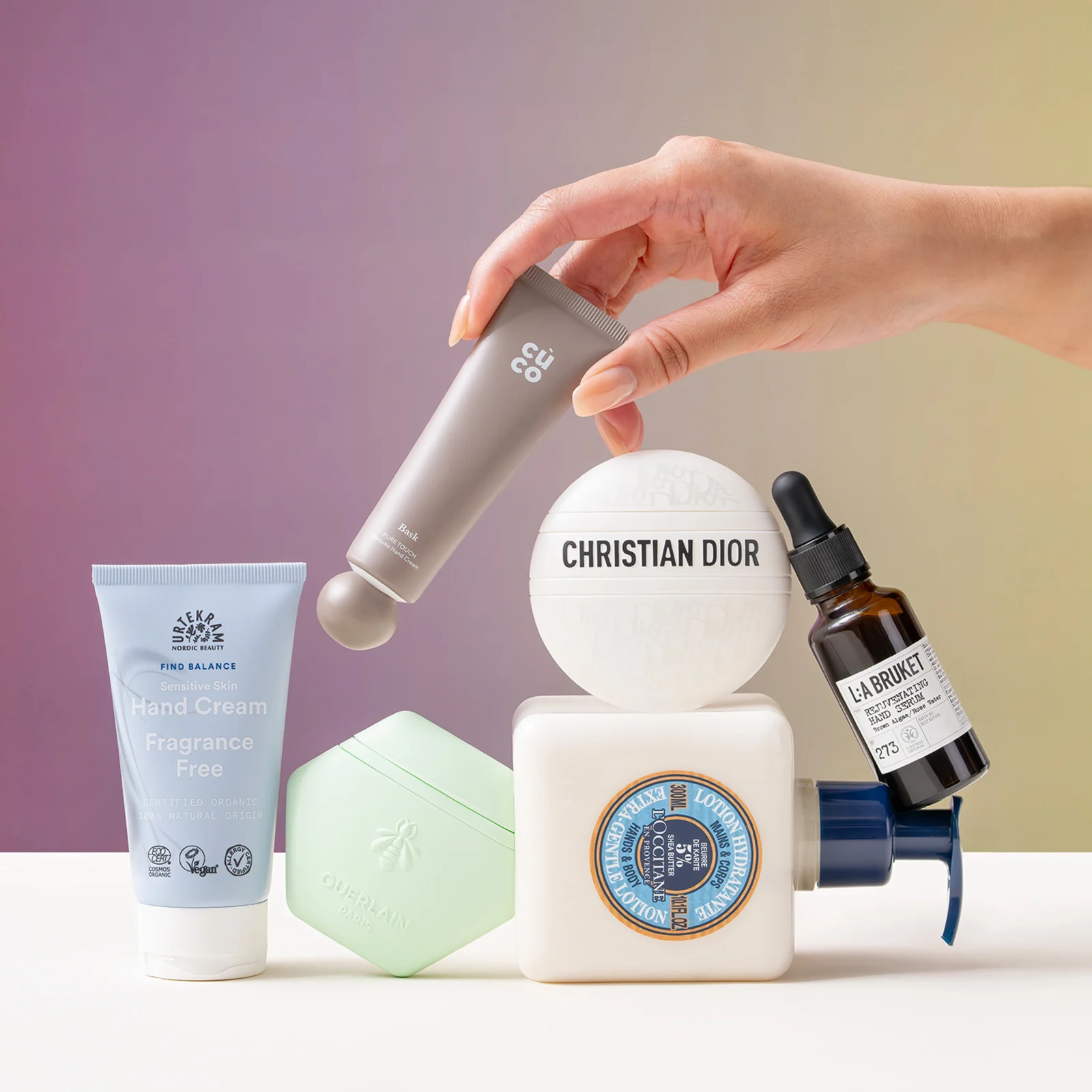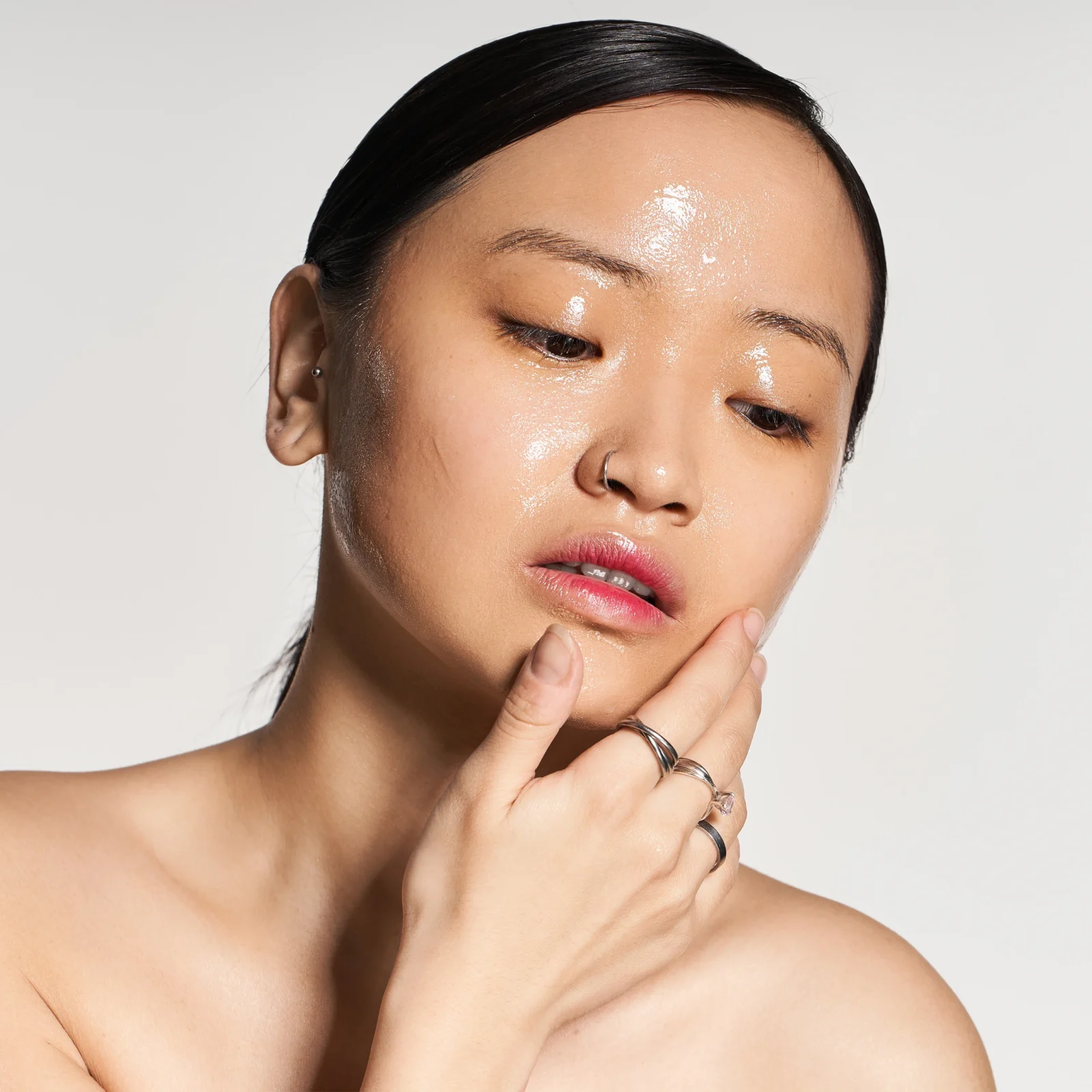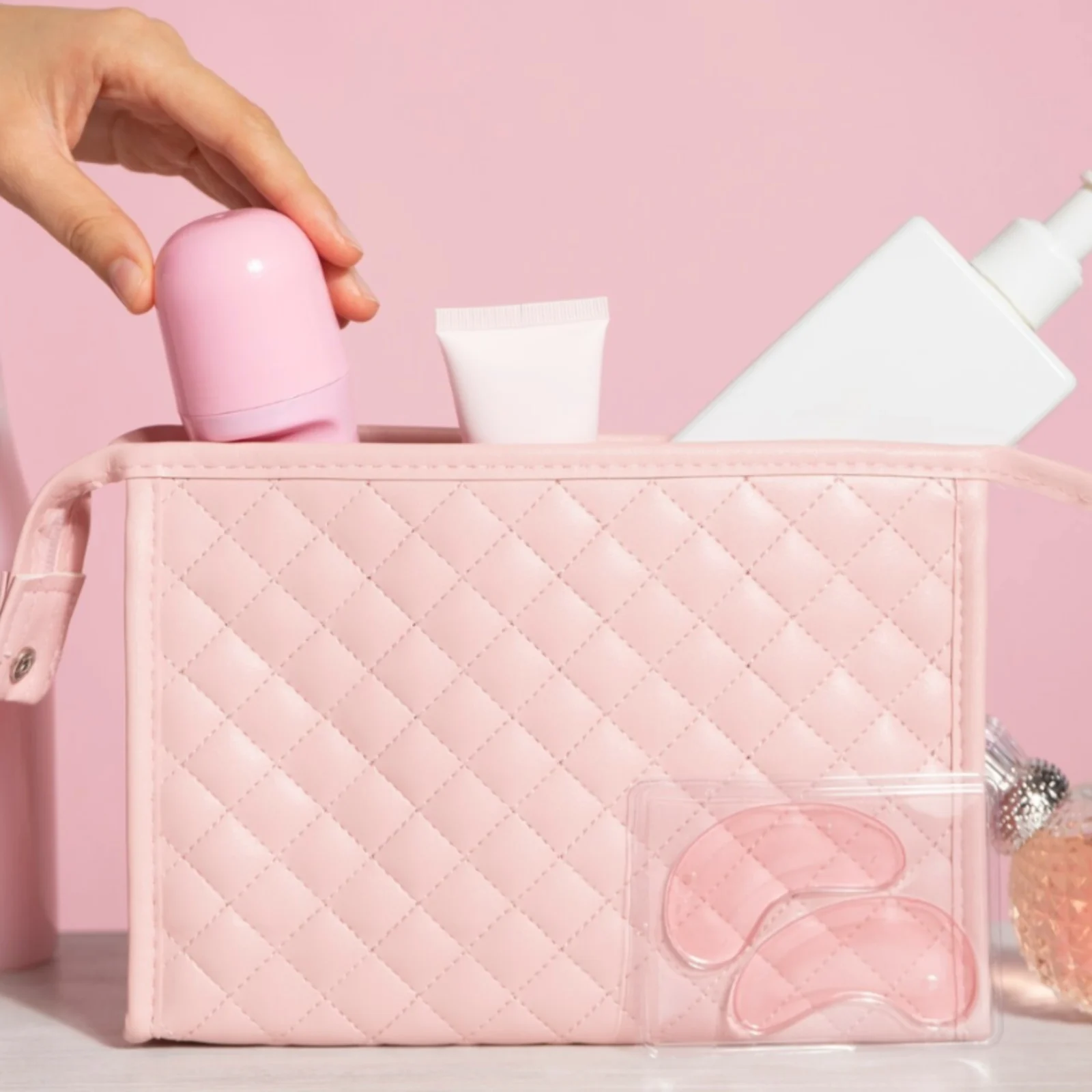Kojic Acid Has Long Been Popular In The Philippines—But Are You Using It Correctly?
Here’s a guide on how to use those soaps, creams, and serums properly, so you can maximize results.
By Devon Abelman and Lia Cruz
Scroll through global TikTok nowadays, and you’ll see that videos about kojic acid are racking up millions of views. These videos look like commercials for the ingredient, featuring content creators who swear it can help clear up acne, fade dark spots, and brighten skin.
But the hype isn’t all that it seems. Social media videos often exaggerate product claims (take microneedling serums, for example), and kojic acid is no exception. David Li, MD, a board-certified dermatologist in Boston, points out that claims by content creators that kojic acid products can “lighten up skin within a week” are simply inaccurate: “Kojic acid takes longer to work,” he says.
In the Philippines, board-certified dermatologist Karen Gavino-Dionisio, MD, FPDS, explains that kojic acid is commonly used for skin lightening and addressing hyperpigmentation or melasma, acne marks, and unevenness in skin tone.
It’s often found in soaps, serums, or creams targeting hyperpigmentation. “The intense sun exposure we experience, combined with high rates of post-inflammatory hyperpigmentation from acne, makes it a favored ingredient,” she says.
Ahead, board-certified dermatologists offer more clarity on this brightening ingredient, weighing in on its benefits, risks, and more.
Meet the experts:
Karen Gavino-Dionisio, MD, FPDS, is a board-certified dermatologist at The Aesthetic Institute of the Philippines in San Juan City, Metro Manila.
David Li, MD, is a board-certified dermatologist based in Boston.
David Kim, MD, is a board-certified dermatologist based in New York City.
Reshmi Kapoor, MD, is a board-certified dermatologist and founder of Brooklyn Dermatology in New York City.
Corey L. Hartman, MD, is a board-certified dermatologist and founder of Skin Wellness Dermatology in Birmingham, Alabama.
Hope Mitchell, MD, is a board-certified dermatologist and founder of Mitchell Dermatology in Ohio.
What exactly is kojic acid?
Kojic acid is a byproduct of fermenting rice or soybeans with certain types of mold, like Aspergillus oryzae. In Japan, this fermentation derivative is called koji, and it’s used to make sake (rice wine), soy sauce, rice vinegar, and miso paste. Some mushrooms, such as shitake, reishi, and snow, are also natural sources of kojic acid, says board-certified dermatologist David Kim, MD.
In skin care, kojic acid is known to brighten skin by inhibiting the formation of tyrosinase, an enzyme that is essential for melanin production, as board-certified dermatologist Evan Rieder, MD, shared on The Inside Story of Kojic Acid mini-episode of Allure US’s The Science of Beauty podcast.
But kojic acid doesn’t block pre-existing melanin: “Kojic acid doesn’t bleach skin or cause over-lightening of areas,” says board-certified dermatologist Reshmi Kapoor, MD. Instead, it specifically blocks the formation of new melanin that typically occurs after the skin has been inflamed due to breakouts, melasma, or sun damage, Dr. Li adds.
What are the skin care benefits of kojic acid?
Because kojic acid blocks and inactivates tyrosinase, an enzyme required for melanin production, it can effectively help fade and prevent discoloration of all types, including sun damage and post-inflammatory hyperpigmentation, says Corey L. Hartman, MD, a board-certified dermatologist in Birmingham, Alabama: “It is best for anyone looking for a more naturally occurring ingredient to lighten dark spots and provide a more even complexion.”
Dr. Gavino-Dionisio adds that it also has a mild exfoliative effect, which helps remove dead skin cells and promotes cell turnover, leading to a smoother and brighter complexion.
For context, alpha hydroxy and beta hydroxy acids, which are also known to diminish dark spots, even out your complexion and reduce hyperpigmentation by chemically exfoliating the outermost, dead layer of skin, says Dr. Kim. Retinol does so by boosting cell turnover.
Board-certified dermatologist Hope Mitchell, MD, points out that kojic acid, beyond its brightening benefits, has antioxidant properties to help protect skin from environmental stressors such as pollution and UV radiation. “This antioxidant effect can contribute to a more youthful appearance by reducing the appearance of fine lines and wrinkles,” she adds.
Kojic acid also has antifungal and antimicrobial effects, which may benefit those who have acne-prone skin, says Dr. Kapoor. It won’t clear up breakouts on its own, but kojic acid “may reduce the severity of acne and subsequent hyperpigmentation,” she explains.
Because kojic acid pairs well with most ingredients, it is often combined with other skin-brightening elements (like niacinamide, azelaic acid, vitamin C, and tranexamic acid) to enhance its effects. Says Dr. Kapoor, pairing kojic acid with a gentle exfoliant, such as glycolic acid, can “help augment results by increasing penetration.”
However, Dr. Gavino-Dionisio cautions that it’s important to set realistic expectations. “Kojic acid can gradually fade dark spots and brighten the skin, but it won’t permanently change your natural skin tone,” she says firmly. “It’s not a magic eraser, and expecting drastic overnight results will only lead to disappointment or worse, misuse. Kojic acid should not be used as a cure for skin issues like melasma or severe acne, but as a complementary treatment.”
How to use kojic acid
According to Dr. Gavino-Dionisio, kojic acid is safe for most people when used properly at the right concentration of 1 to 2 percent. But she says that those who suffer from eczema, psoriasis, or rosacea, as well as pregnant or lactating women should use it with caution, or avoid it altogether. To avoid potential irritation, she also advises against combining kojic acid with strong retinoids or exfoliating agents.
“My advice,” she says, “is to treat kojic acid like any active ingredient—introduce it slowly, monitor how your skin reacts, and never skip sunscreen. Kojic acid makes your skin more sensitive to the sun, so sun protection is non-negotiable.”
Kojic acid can now be found in cleansers, creams, lotions, and other skin-care potions. And while kojic acid soaps are getting a lot of internet buzz at present, our experts unanimously agree that kojic acid works best in serums and creams. “Serums are often the most potent and effective form, allowing for deeper penetration and more targeted treatment of hyperpigmentation,” says Dr. Mitchell. Plus, Dr. Kim notes, kojic acid is most effective when it can stay on your skin all day and night.
The best time to start using a kojic acid serum is right when you notice a dark spot beginning to form, Dr. Li says. “Mechanistically, this works because kojic acid blocks melanin synthesis,” he explains, adding that melanin typically accumulates after inflammation or due to skin conditions like melasma; as hyperpigmentation worsens, it’s more difficult for kojic acid to work effectively.
If you have sensitive skin, proceed with caution when using kojic acid. Says Dr. Hartman, the ingredient’s most common side effect is contact dermatitis, adding that kojic acid can cause redness, irritation, swelling, itchiness, and pain if a flare-up occurs.
To avoid negative reactions like rashes, Dr. Mitchell recommends patch-testing any kojic acid product before incorporating it into your skin-care routine. Also, she suggests, try a moisturizer that contains kojic acid and hyaluronic acid instead of a serum; you’ll get a one-two punch of brightening benefits and plumping hydration, which counters the dry skin kojic acid can potentially cause.
How long does it take to see results?
With consistent use of a kojic acid serum or moisturizer of your choice, “results can be seen in as quickly as two weeks,” Dr. Kapoor says. The best results, however, are typically seen after six to 12 weeks, according to Dr. Gavino-Dionisio. However, consistency and sun protection are key, she points out. “Kojic acid works best as part of a complete, mindful skincare routine and not as a standalone fix.”
A note on kojic acid soaps and pads
Kojic acid bar soaps have long been used by Filipinos, but the jury is out on whether or not they work. “Kojic acid needs to sit on the skin and penetrate for it to be effective,” says Dr. Kapoor. “If used in a wash-off product, it may not work at all.”
And if you’re thinking you might let the soap sit on your skin for a little longer, know that dermatologists advise against this. “The concentration of kojic acid in these soaps can vary, and prolonged use can potentially lead to skin irritation,” Dr. Mitchell says, “especially if the soap is left on the skin for too long.”
If you insist on using a kojic acid soap, Dr. Mitchell strongly advises you patch test it first, then follow your cleanse with moisturizer. Dr. Li tried a kojic acid soap for himself and says it made his skin feel tight. The exfoliating cleansing pads spiked with kojic acid, which often go viral on TikTok, are not your best option either. They, too, require rinsing and may not allow the ingredient enough time to work its magic.
User error is also common with these products. They’re easy to overuse and, Dr. Mitchell says, this can lead to irritation and damage to the skin barrier. Additionally, multiple content creators can be seen blowing into the yellow-tinted cotton rounds to make them foam up, which “can introduce bacteria and compromise the product’s hygiene,” she says.
For Dr. Gavino-Dionisio, the most important piece of advice she can offer is: “Don’t assume that ‘more is better.’ Many people tend to overuse kojic acid soaps, scrubbing too often or using it multiple times a day. This can actually damage your skin barrier, making things worse.”
She also stresses the critical importance of avoiding unregulated products. “Beware of unregulated or homemade products with unknown concentrations. Just because something is labeled ‘natural’ doesn’t mean it’s safe.”
And most importantly, Dr. Gavino-Dionisio says that kojic acid shouldn’t be used to try and whiten your natural skin tone. “There’s nothing wrong with wanting clear, even toned skin,” she says, “but healthy skin should always be the goal, not changing who you are.”
- KEYWORDS
- kojic acid
- skin
You might also like
To provide a customized ad experience, we need to know if you are of legal age in your region.
By making a selection, you agree to our Terms & Conditions.







